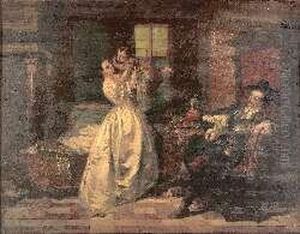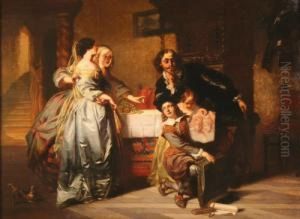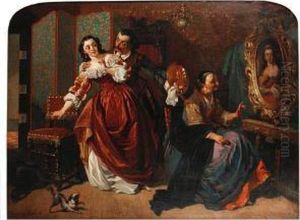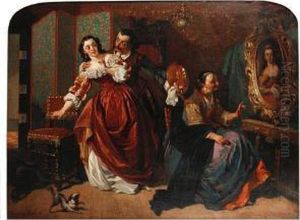Charles Van Den Daele Paintings
Charles Van Den Daele was a Belgian artist known for his contributions to the Flemish Expressionist movement. Born in 1878, he was part of a generation of artists who were seeking new means of expression in the late 19th and early 20th centuries. Van Den Daele's work was heavily influenced by the changing artistic landscape of the time, which saw the emergence of movements such as Impressionism, Post-Impressionism, and eventually Expressionism.
Van Den Daele's early work displayed the influence of Impressionism, with a focus on light and color. However, as his style evolved, he began to incorporate more structure and form into his paintings, showing the beginnings of an Expressionist approach. His works often depicted scenes of rural life, Belgian landscapes, and the working class, characterized by a strong use of line and bold, sometimes somber, color palettes.
Throughout his career, Van Den Daele exhibited his work widely, participating in shows across Belgium and abroad. His contributions to the art world were recognized by his peers and art critics of the time, although he did not achieve the same level of fame as some of his contemporaries. Nevertheless, his paintings captured the essence of Flemish culture and the emotional intensity of the Expressionist movement.
Charles Van Den Daele passed away in 1938, leaving behind a body of work that would continue to be appreciated for its emotional depth and technical skill. While not as widely known today as some other artists of his time, Van Den Daele's work remains an important part of the history of Belgian art and the broader narrative of European Expressionism.



